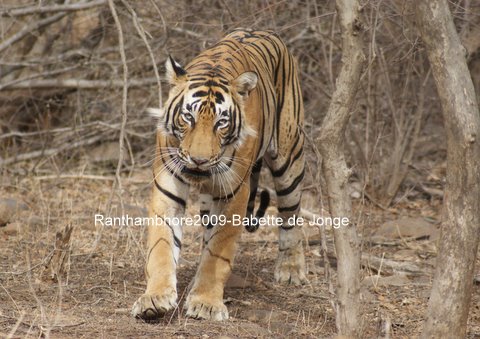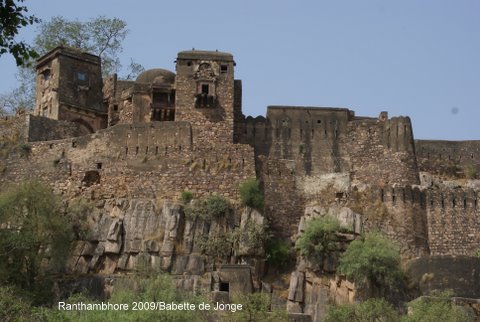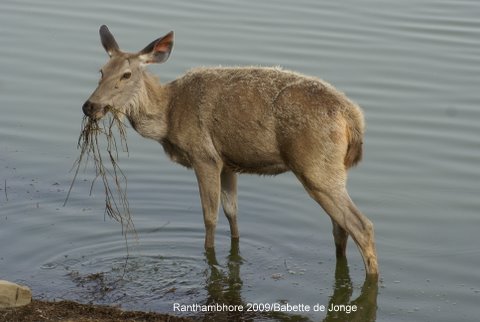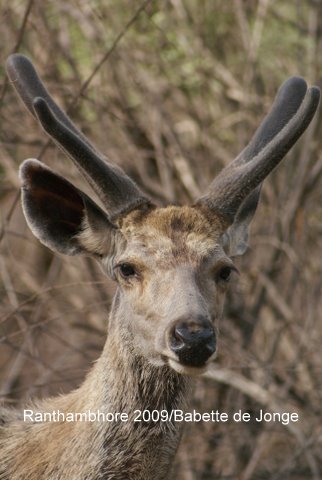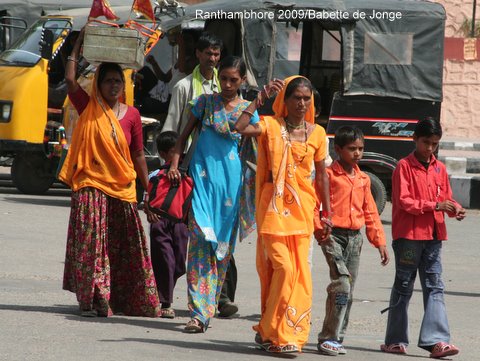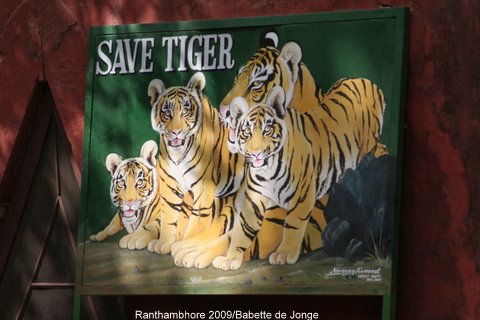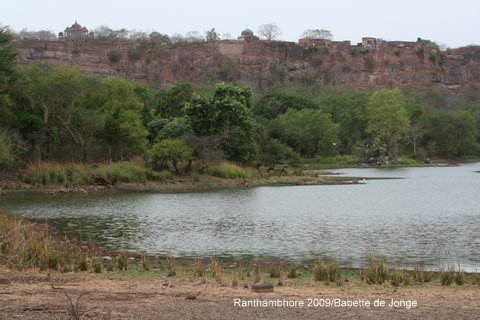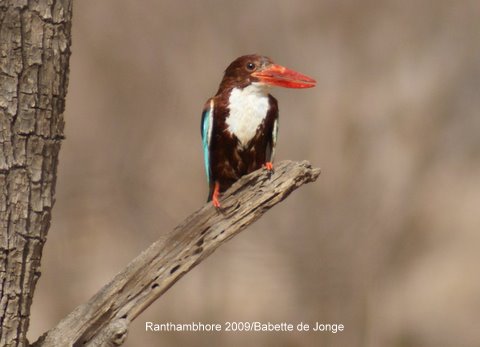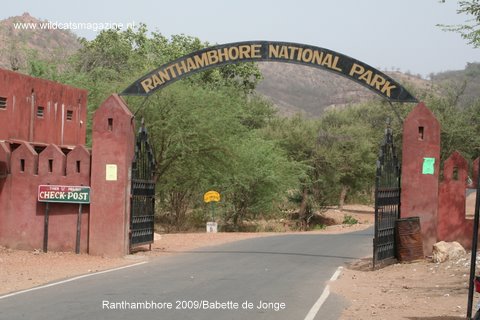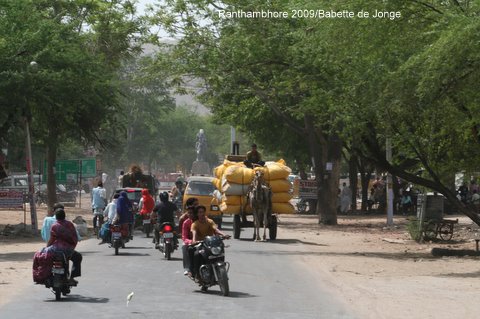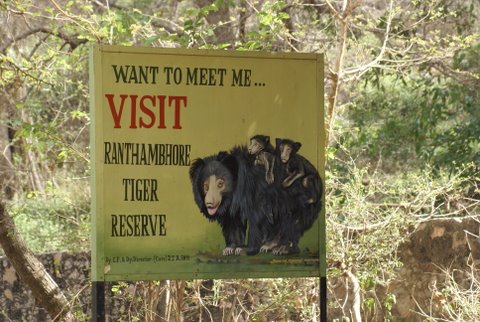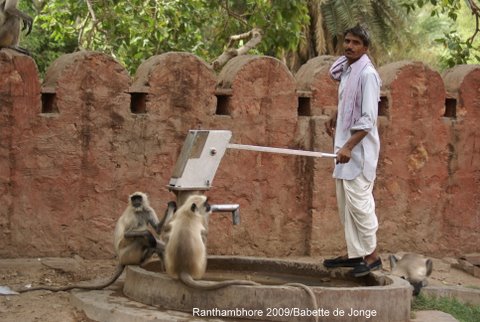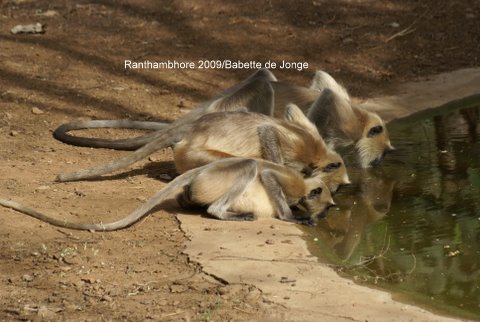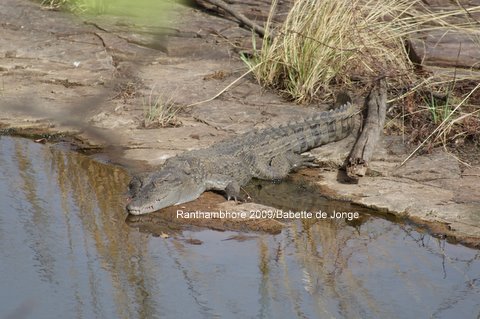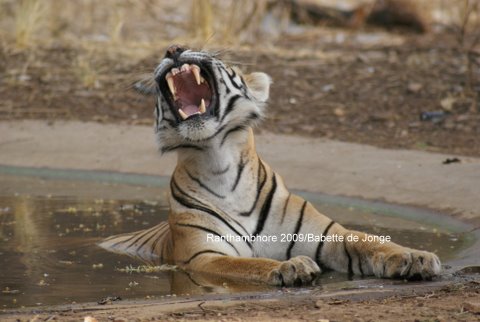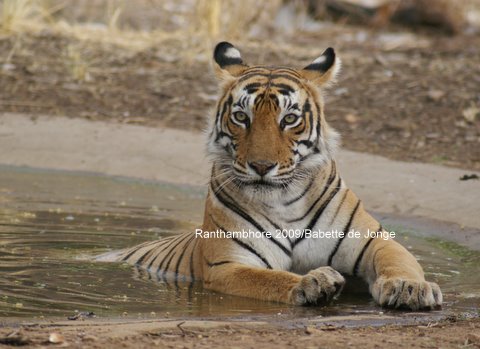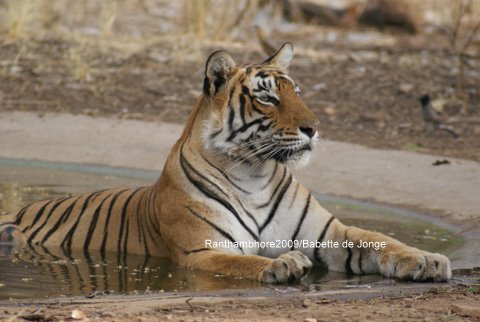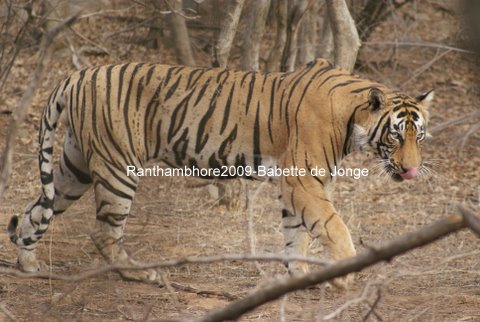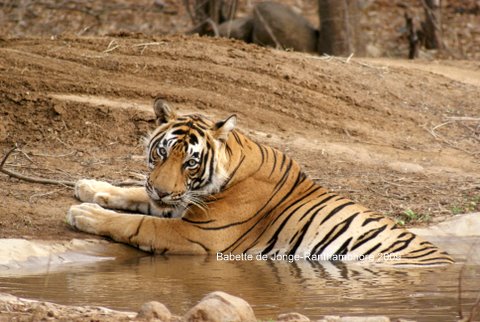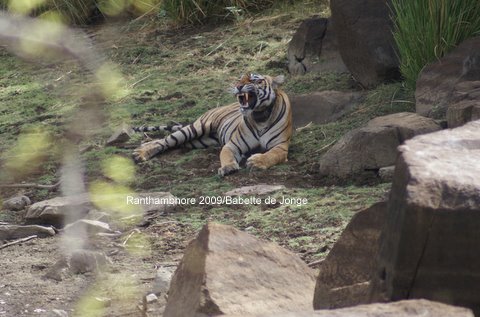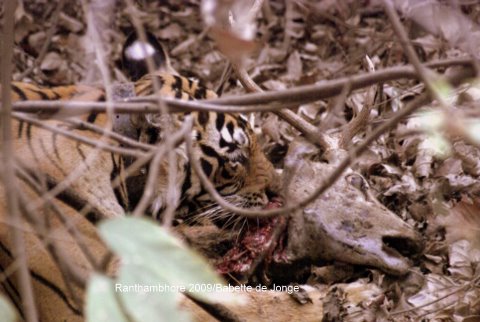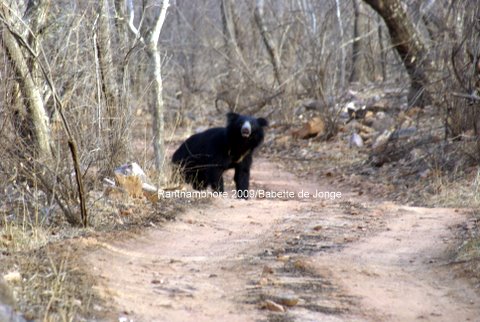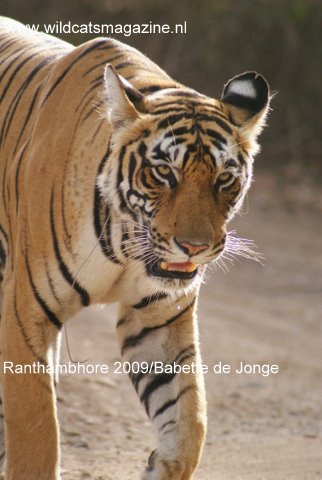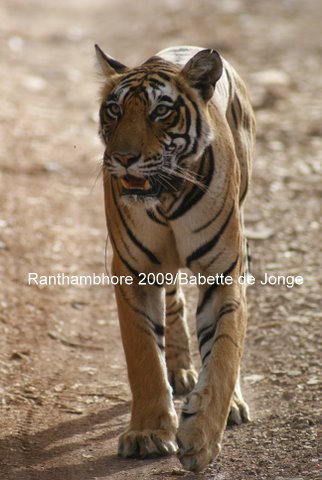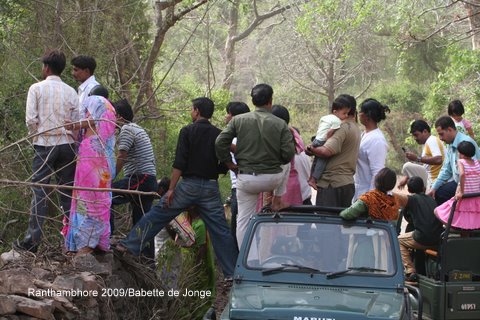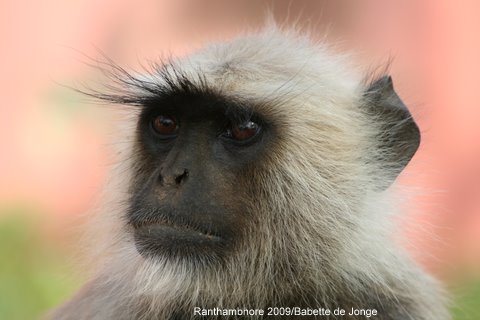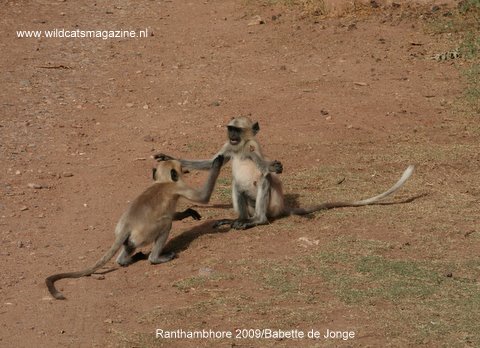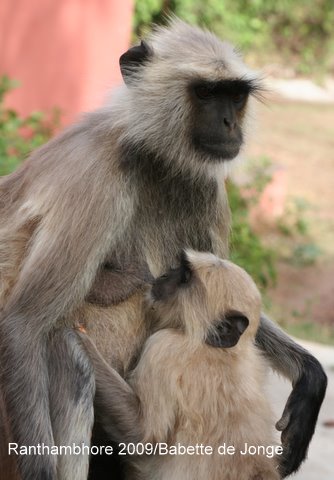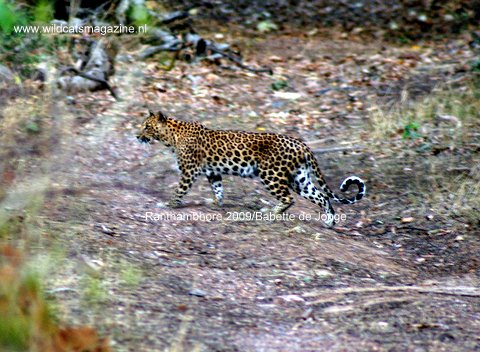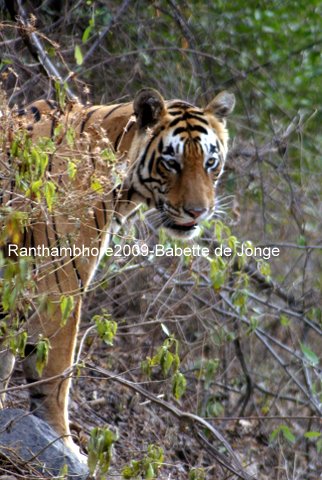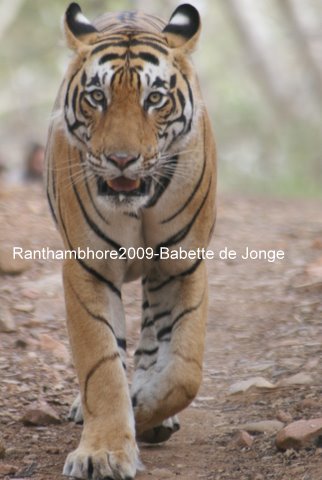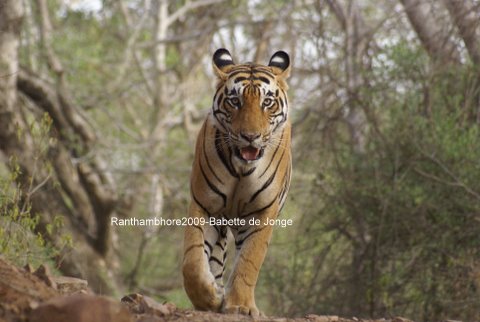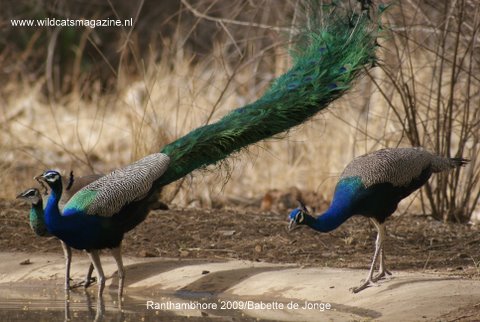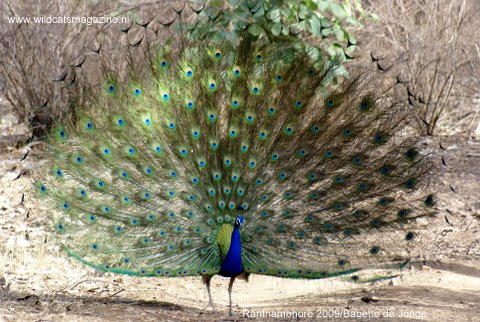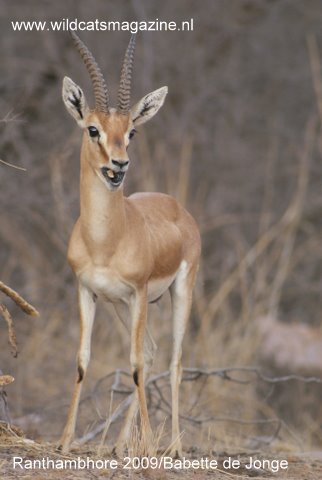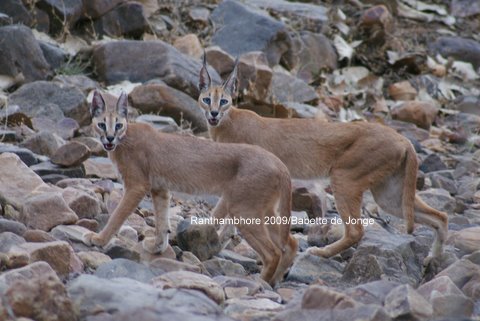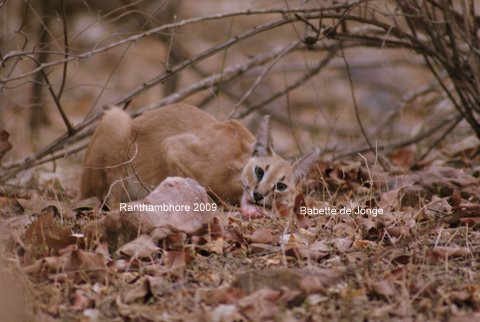Back to the Jungle
I look at the calendar with every month another great photo of another wild cat. With this month, June, there was a great photo of a caracal (desert lynx). “This should have been a photo of a tiger” I thought, as this month we would travel to India again to try and see some more Royal Bengal tigers. We would travel to Ranthambhore National Park. Of course they have caracals there too, but they are so rare one hardly sees them in the wild. We would focus on the tigers, as it’s difficult as it is to have great tiger sightings in the wild. But we knew it would be possible.
Of course we know we are very privileged to go to India to see cats in the wild again. In March this year we travelled to the Masai Mara in Kenya again and the lions, leopards, cheetahs, servals and all other African wildlife showed themselves the best way to us again. Now we have been very much in love with Africa since the first time we’ve been there and our first visit to India in 2007, where we visited two tiger reserves Bandhavgarh and Panna, didn’t measure up to our African trips, but no tigers in Africa, so to keep on seeing them in the wild as well, we have to travel to Asia every now and then and we haven’t regretted this second visit for one bit.
So, on a hot summer day, when a thunderstorm seems to make and end to the tropical weather in Holland, I will try to write a full report of another amazing trip into the jungle again. I bet it will be a long one again too, since we’ve seen so much again. Just unbelievable!
As I said before we’ve been to the Bandhavgarh tiger reserve in 2007, where we’d already seen some tigers in the wild, even though it was from quite a distance and it was already getting dark as it was the end of te day on a winter day in India. We got spoiled by all the fantastic sightings in Africa, so we weren’t easily satisfied. We knew it would be possible to have even better sightings of tigers in the wild. We only had to do it in a different way.
Don’t get me wrong: we of course had an excellent trip the first time as well. For who’s interested, this report you can read on this website too. We were there with a small group of very nice people, guided by Shekhar Kolipaka, a wildlife biologist specialising in studying the wild cats of India, esp. the lesser cats. We are still in touch with Shekhar frequently, who’s now living in Holland as well and we are working on some project together about which more later.
During this 2007 “Tiger Study Tour” we tried to get a more general picture of life in the Indian jungle. We followed tracks and trails, learned everything about pugmarks, scent marks, the territory of the tigers and about prey and predators living together. One of the highlights also were the rides on an elephant’s back. We were lucky to have two tiger sightings as well. The first time mother tiger with two youngsters of different ages and second time we saw a tigress stalking through the forest. It’s so special and emotional every time you see a tiger in the wild. So we definitely had to see more.
Originally we planned our trip to India in November this year, as we did a trip in march and it would be nice to have something to look forward to by the end of the year as well. But as you know plans are there to be changed. One of the most important things of a successful trip is the right company. Now we’ve made so many nice contacts through the years, and by some nice photographers we were told an Indian guy, called Nafees, is one of the best guides and tiger spotters. He would definitely show us some great tigers and he would create the best photo opportunities for us. This sounded like music in our ears of course.
We got in touch with Nafees who was as excited as we were, and he started arranging everything for our trip right away. He only insisted we could better come in June instead of November. June is a very hot and dry period just before the Monsoon. Nafees told us we could have better sightings then and it also would be much more quiet in the National Parks, as there would be less tourists around. They usually travel during high season when it’s very crowded, more expensive and less hot. But we wanted to increase every possibility of seeing tigers, so even though the heat was on, up to 45 degrees during the afternoon, we would take this for granted. So off we went again….to India.
Another plan changed as we first intended to visit a few tiger reserves, but we fully agreed to Nafees suggestion to focus on just one park and if the sightings wouldn’t be good, it was early enough to decide to go to another park as well. To start with our main destination was the Ranthambhore National Park.
When we arrived at Delhi airport, we could already feel the heat, as even the evenings were very warm and muggy, but long live aircondition, in the hotel rooms, cars, trains etc. So that made it more bearable to cool off a bit after a long day out in the sun. The first night we stayed in New Delhi and the next morning we went to Rajasthan on a 5,5 hours journey by train. Arriving there Nafees met us at the trainstation and brought us to the hotel. We already made some plans for the coming week and the same afternoon we already went out on a first safari, searching for tigers.
It’s a completely different world in India to what we are used to in Europe and western countries. It’s very hectic and chaotic in the bigger and smaller cities, on stations and in traffic. The pollution in the air, the incredible heat. We, people of nature, wouldn’t cope long to live in these crowded places under these circumstances. We though admire the people living here tough and also the way in which everything is still going well even though it’s so chaotic. They hardly seem to have any rules in traffic. On the street (or train rails) one can see cows, dogs, (wild) boars, goats, but also praying people and small children. Even though cars are passing by cars, people and animals at great speed with loud horns, there seem to be hardly any accidents. There’s great respect for all living things. Yet there are also lots of noisy quarrels; people in the middle of an argument.
Like with every trip we had a kind of “wish list”, animals we loved to see, like tigers in the wild. Not impossible with these hight temperatures. It would also be nice if the tiger passes the road just in front of our vehicle or would walk up to our car. Of course it would also be great to see some other cats like the leopard, but also the lesser cats like the junglecat, Asiatic wild cat and of course the caracal. Then also sloth bears and striped hyenas are living in Ranthambhore, so it wouldn’t be too bad to see a glimpse of them as well. Of course we know as the best how difficult it is to see certain animals in the wild, but we could always stay positive and also Nafees was determined to show us the best he could.
And he lived up to his reputation. He appeared to be a very passionate and skilled guide and wildlife spotter, focused on showing his clients the best of the tigers and wildlife. Together with driver Mr. Singh they appeared to be a great team who could work together the best way. With helpful tips of Nafees’ contacts and friends inside and outside the park, we managed to have great sightings. It was nice to return to the hotel in between safaris, to enjoy great Indian food and cool off and relax a bit in our airconditioned hotel.It really is a much better time in June, not so many tourists around, except for big groups of Indians staying in the same hotel during weekends. The service in India and Africa by e.g. staff of the hotel is exceptionally good and friendly. I think we can learn a lot from this in our European countries.
Already at our first game drive in Ranthambhore Tiger Reserve we saw our first tiger. A beautiful tigress who tried to cool off a bit by laying down in a water hole, drinking a bit of water at the same time. Humans sometimes have to interfere in the wild as well. They have made a few artificial waterholes to supply predators and prey animals with water in the dry season as well. The tigers of course really appreciate this water to have their favourite lay down in the water. As long as this is the only thing people are interfering with, this is not too bad.
To be able to follow the tracks and to guard the tigers, to try and stop poachers, the tigers have been given numbers and names. The park guards know exactly which tigers belong to which area of the park. Every guard is responsible for the safety of a few tigers, so if something happens to them they have to answer for it.
The first female we saw was called T5 (Tiger 5). We did see her another time the same week. For a few days she wasn’t seen and then she came back with a kill. When we saw her she was again lying down in the water having a drink on another hot day in the jungle. Her 5-year old sons, T6 and T7, sometimes come to see their mother and sometimes they even share a prey, not a very uncommon thing to do for tigers, as there are a lot of examples of tigers sharing a meal. We did see T6 on our first afternoon drive, very far away and very shortly.
One afternoon we found T7, who was lying down near a waterhole. A great advantage this time of year is that the visibility is much better. We could see him lying in the bushes near a waterhole and every time he wanted to have a cool off he went to the water and laid down. Most of the times he went back into the bushes, but he also fall asleep in the water once. He did keep a close eye on us though.
A famous tigress of Ranthambhore who has been photographed and written about a lot, was called Machili or T16. She was the resident female and she reigned over the famous lake and its surroundings. She’s getting older now and her daughter T17 took over and pushed her old mother out of her territory. She’s been given a collar, not to follow her but to collect more information about her.
We did see T17 a few times. The first time on quite a distance when she was laying down near the lake, resting and feeling hot. On the last day we saw her just outside the gate to te park, eating a sambar that’s she killed a few days before. It had a terrible smell but no doubt the taste was very good to her.
The best sighting we had was when she was crossing the road and walked up to our vehicle. We were the only car who had the best position, as she was walking up to us and we had to make way for her all the time by driving backwards, other cars were following her. It was incredible to see this majestic tigress so close and while she was walking up to us, looking us straight into our eyes…well camera. Unbelievable!
The same morning we have been following her tracks and we also saw pugmarks of a female sloth bear. We were driving, driving….and then suddenly, excitement overcame us, we saw her walking in front of us. Sloth bears are very elusive and nervous animals and with the first glimpse of our car she was already running into the forest again. But Nafees knows the ways of the jungle and it animals so well, that we were there just in time to see her crossing the road again, and then she stopped for a quick moment to take a better look at us. Time enough to take a quick shot. Incredible! Sloth bears having been seen for a while now and we did see one. It appeared to be a mother of two cubs who were left behind, so se had to return.
One of the park guards who joined us in the car, was attacked by a sloth bear a few years back. He had to stay in hospital for two months to recover from this attack, but he’s still alive. When we were leaving the inner parkgate we noticed a lot of noisy Indian people, standing on top of their cars or on the stony wall, pointing down into the bushes. T17 was walking there again, but she didn’t like all the crowds and the noise they produced, so she disappeared in the forest again very soon. We noticed that esp. Indian people are very keen on seeing tigers. They get so enthusiastic, almost hysterical, when they see one. Lots of Indians asked me to send photos of our tiger sightings as soon as we got back home. After a safari we were always asked if we’d seen any tigers; other wildlife didn’t matter much to them so it seemed.
Then there was an afternoon when we couldn’t find any tigers. If you read this report and my previous travel reports, it seems like it’s very easy to see all these wild cats, but nothing is less true. Often we hear from people who left the reserve and haven’t seen a tiger, leopard of oter cat. It doesn’t go without saying to see one. Of course you can create the best changes, by trying as hard as you can and to be as patient as possible. And like we said it’s very important that the right people join you on a trip like this. This all increases your opportunities but still is all a matter of luck as the wild stays unpredictable.
So this was the afternoon when we thought our luck has left us for a moment. We drove all afternoon and it was time to get back to our hotel. We had driven a long way in the immense tiger reserve of 1400 km2, so it was necessary to speed up a bit. The nature is rough and the roads are of course very bumpy, when you’re driving quickly. Some areas were worse than others. The “leopard gorge” was gaping at us when we were driving on the small roads right next to it. Real nature….you mustn’t be afraid of heights though. Strange, I thought I was, but I never have any problems with this though. It’s a beautiful place here in Ranthambhore, also with the lakes, fort, remains of forts and temples.
Just before we were leaving the park on this afternoon, we heard an alarm call. It was a leopard. We saw him (or her) coming down, pretty far away in the dark, but anyway still a nice moment to see another leopard. Gorgeous animals. Being there at the right place at the right time….Nafees called it “catkarma” and we keep that in mind.
Same thing next morning… Due certain circumstances we went out a bit later as planned so we didn’t feel so good about it at first. When you arrive at the gate of the park, it’s necessary to be there in time so you have time to choose the area you want to go to that morning or afternoon. The park is divided in so-called areas and every driver gets a certain area where to spend the morning or afternoon. This is necessary to prevent too many cars coming at the same place at the same time, and to protect the animals. In the high season it’s not allowed to have more than 4 vehicles present at a sighting at the same time. Every car can be there for 10 minutes only, to give everybody equal chances to have good sightings. Thank god this time of year it’s not that strict. But also we had to follow the rules and stay to the area that’s been selected for us. This morning we were a bit late and Nafees didn’t get the area he originally wanted, so we entered the park near the lake again, where we had such great sightings of the resident female T17
I was just pointing at the gate we saw T17 walking through the day before and wanted to tell Nafees the photo of this special occasion turned out better than we thought as there was so bad light. I was just pointing in the direction of the gate and at the same time as Nafees said “tiger!” we saw the head of a big male, looking our way as he wanted to cross the road right in front of us. So he did, at the same time scent marking with urine and crab. Then he disappeared in the forest again, but thanks to Nafees and Mr. Singh we could track him again and some him another time while he was walking the road and his territory for a very long time. We were again in the best position so we could see him coming up to us again. It’s breathtaking to see this majestic animal in the wild. Once seen a tiger in the wild, you’re less happy to see a tiger in captivity. This so beautiful and unforgettable. Anyway talk about “catkarma” again, us being there again at the right time at the right place. This was the reason we were “forced” being a bit later.
This gorgeous male tiger’s called T 28. It’s a different experience to see a female tiger walking or a male tiger. The females walk a lot faster, the males are walking like every step is too much, and besides they continue scent marking trees etc. to let other males know it’s their territory. From insiders we heard that T28 had mated with T17 and T19, so hopefully some cubs will be born soon, and then we hope to see them next year when we are coming again. T17 and a few cubs near the lake would be an awesome sight.
Another afternoon seems to pass with a lot of driving but no spectacular sightings. Of course it’s also great to see the rest of Indian’s wildlife, like deerlike animals Sambar, spotted deer, blue bull and Indian gazelle. Lots of colourful birds, esp. lots of peacocks dominating the park, with their remarkable sound, the males displaying beautifully, trying to get the ladies. Lots of langur monkeys with babies of different ages. They also stay near people, sometimes being fed and getting fresh water. They were also sitting on our car one moment.
People sometimes ask why it’s so much more beatiful to see these animals in the wild than it’s in the zoo. The answer is quite simple. Wildlife is much more exciting. You never know if you see something and what you are going to see. It’s unpredictable. Also the nature is much more beautiful and fotogenetic. It’s worth everything to see your favourite animals in their natural surroundings. Something I can recommend to everybody. In a zoo they are already happy when there’s for instance 1 elephant born, but in the wild you see big groups and so many youngsters. No limitations like in captivity.
But it’s a shame that even in the wild people do have to interfere sometimes for the sake of the animals. Lots of wild animals are being threatened or extinct in the wild because of humans, but other humans have to work hard to rescue what’s left to be rescued. We already mentioned the artificial waterholes, but sometimes it’s even necessary to feed young animals until they can fully hunt and kill themselves. A few months ago there was a serious fight between a male tiger and a tigress, mother of two cubs. The tiger wanted to kill the cubs and the tigress tried to prevent that. The cubs could run away but sadly so the mother died because of her wounds. It’s necessary to keep all born cubs alive so the parkmanagement decided to feed the cubs until they were totally independent. Of course the tigers must not see any relation between humans and the food when this is happening. The cubs are healthy and independent now.
After a long drive and no sightings we stopped to take a look at a few chitals (spotted deer) who were looking all very alert in the same direction. We waited a while but nothing was there, so we drove off and suddenly some catlike animals, orange coloured, crossed the road in full speed. Hard to see what it was but Nafees said it was a jungle cat. A shame it went off so quickly. We did have a good sighting of a junglecat in Bandhavgarh last time, though that one was different coloured, more greyish black. The colours changes with the areas.
Suddenly Nafees shouted astonished and happily surprised: caracal! We haven’t jumped up so quickly before as at this very moment. Was it possible, a caracal? The Indian caracal is the most rare and threatened of all caracals, hardly seen in the wild. What surprised us even more: it was not just one but there were three caracals. They were walking very fast and into the bushes. It was getting darker too, so very difficult to take photos but we had to leave our adrenaline outburst for what it is for a while and try to do the best we can to take good shots and lots of shots. But these animals were shy and running off. Later on we found them again and tried to get nearer. We knew the chance would be big that they would run off again but to our surprise they didn’t and we watched them for 45 minutes, hanging around a bit, some interaction between the, so it seemed, mother and two, almost fully grown sons, and the one son was eating a monitor lizzard that they probably would have killed right before. It was a unique experience to just see them but even more rare to have the change to observe them for such long quality time, having more possibilities to take shots and film recordings, which, we know now for sure, are of great value to further research. We have plans now to start a book about the caracal, together with Shekhar Kolipaka, the wildlife biologist and small cat expert, who studied caracals for a while too but never got such an opportunity like we had.
Referring back to the “catkarma” again and to the photo of the caracal on the calendar, mentioned at the start of this report….or just a coincidence?
A few days after this unique moment we had a same unique sightings with the two young males, the mother probably was in the area as well. They were strolling through the forest, trying to get some food no doubt, climbing a tree, crossing the road. Incredible!
We are trying to make more people enthusiastic about the caracal with a book and our findings. Trying to persuade them to start studying them as well and help people understand them more. Shekhar is also on to another fantastic project: The Pugdundee Conservation Unit, with a sole purpose to create corridors between 5 tiger parks so that animals can move freely in the large landscape. More about this later on this website.
A hundred and fifty years ago Bandhavgarh, Pench, Kanha and Panna were one, gigantic jungle where humans and animals live in a mildly fluctuating balance. Sure, sometimes a tiger would become a man-eater and this would cause panic and inconvenience until it moved away or was killed. But the biggest problem of today is that humans don’t know how to live with animals anymore. They simply don’t know how to behave. We have to try and make them understand. Education is the best way to reach more understanding, but there’s a long way to go still.
It’s amazing all the things we’ve seen during this journey. I don’t want this to be boring, just by mentioning all sightings, but to make the list complete: we did meet another leopard, a shy female, hiding in the bush, high on a rock. She was limping the first time we saw her but it didn’t prevent her from killing as there was a chital lying near the road. She didn’t eat much of it yet. The next morning we found her again and she was as shy, not limping anymore and she already ate some more. There are no vultures around. They ate carcasses of cattle who had a painkiller called diclofenac and they were poisoned by this. There are not many vultures around anymore, sadly so.
We also saw two more male tigers….two brothers, T24, another walking session with this handsome boy, through his territory, and we saw his brother T23 at a different place though not so far from where we’d seen T24, who was very lazy after a long walk that morning (like every morning) and he’s shy too so Nafees told us. He was lying high in a hole, keeping a close eye on us.
Thank you so much Nafees, for your excellent work showing us the best of the tigers and other wildlife, for your expertise, guidance and friendship. See you again next year. Also thanks to Mr. Singh, the best driver, to Rosie and Anette for the great recommendation, and for the park management for looking after all the great tigers. We’ll be back next year!
More photos are available in the photogallery.
Copyright: Babette de Jonge/2009

